
150 Results

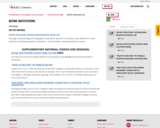
OER Text materialSocial Structure: The Building Blocks of Social LifeSociology: Understanding and Changing the Social World. Section 5.1.3 provides a basic definition of social institutions, providing examples of institutions. It also provides a working definition of society
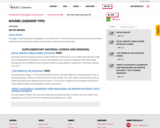
OER Text MaterialSocial GroupsSociology: Understanding and Changing the Social World, 6.2.2. This section discusses Instrumental and expressive leadership; and authoritarian leadership, democratic, and laissez-faire leadership.
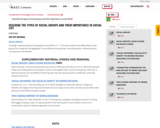
OER Text MaterialSocial GroupsSociology: Understanding and Changing the Social World, 6.1.1. This section defines and differentiates social groups from categories and aggregates. It also defines primary groups, secondary groups, reference groups, in/out-groups, and networks.
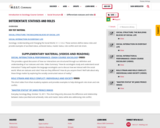
OER Text MaterialSocial Structure: The Building Blocks of Social LifeSocial Interaction in Everyday LifeSociology: Understanding and Changing the Social World, 5.1.1, 5.3.2. These sections define status roles and provide examples of ascribed status, achieved status, master status, role conflict and role strain.

OER Text MaterialGroup Dynamics and BehaviorSociology: Understanding and Changing the Social World, 6.2.3. This section reviews Asch, Milgram and Zimbardo’s experiments to discuss how groups influence conformity, and roles and authority influence obedience.

OER Text MaterialFormal OrganizationsSociology: Understanding and Changing the Social World, 6.3. This section defines the ideal type characteristics of bureaucracies, explains some disadvantages of bureaucracies and explains the iron law of oligarchy.

OER Text materialGroup Dynamics and BehaviorSociology: Understanding and Changing the Social World, 6.2.1. This section reviews dyads, triads and how group dynamics and strength alter by group size.


OER Text MaterialSocialization, Chapter 5This chapter starts with the definition of socialization as the process through which people are taught to be proficient members of a society. In addition, it describes the ways that people come to understand societal norms and expectations, to accept society’s beliefs, and to be aware of societal values. It goes further to note that socialization is not the same as socializing (interacting with others, like family, friends, and coworkers).

OER Text MaterialTheories of Self-Development, Section 5.1This subsection starts with psychological perspectives on self development before delving into sociological theories of self-development. Notable theories use include Kohlberg’s Theory of Moral Development, Gilligan’s Theory of Moral Development and Gender. Also explained in the subsection are the theories of Charles Cooley who asserted that people’s self-understanding is constructed, in part, by their perception of how others view them—a process termed “the looking glass self.” George Herbert Mead’s study of the self is covered as well as Erik Erikson’s theory of personality development. In addition, Jean Piaget’s theory on the role of social interactions in the development of people is covered. The work of Sigmund Freud about how people develop a sense of self is also covered in this subsection.
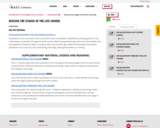
OER Text MaterialSocialization Across the Life Course Section 5.4 Socialization is not a one-time or even a short-term event. Socialization is identified as a lifelong process. In the United States, socialization throughout the life course is determined greatly by age norms and “time-related rules and regulations” (Setterson 2002). As we grow older, we encounter age-related transition points that require socialization into a new role, such as becoming school age, entering the workforce, or retiring.

OER Text MaterialResocialization and Anticipatory Socialization, Section 5.4This subsection explains anticipatory socialization as the preparation for future life roles. It gives examples like cohabitating before marriage or soon-to-be parents who read infant care books and prepare their home for the new arrival. As part of anticipatory socialization, adults who are financially able begin planning for their retirement, saving money, and looking into future healthcare options. Resocialization is explained as the process of being socialized again when, for example, old behaviors that were helpful in a previous role are removed because they are no longer of use. Resocialization is necessary when a person moves to a senior care center, goes to boarding school, or serves time in jail. In the new environment, the old rules no longer apply. The process of resocialization is typically more stressful than normal socialization because people have to unlearn behaviors that have become customary to them.
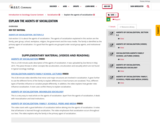
OER Text MaterialAgents of Socialization, Section 5.3Sub-section 5.3 is about the agents of socialization. The agents of socialization explained in this section are the family, peer group, school, workplace, religion, the government and the mass media. The family is identified as the primary agent of socialization. It is good that the agents are grouped under social group agents, and institutional agents.
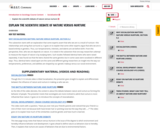
OER Text MaterialWhy Socialization Matters: Nature versus Nurture, Section 5.2This subsection starts with an explanation that some experts assert that who we are is a result of nurture—the relationships and caring that surround us. It goes on to explain that some other experts argue that who we are is based entirely in genetics. Thus, our temperaments, interests, and talents are set before birth. From this perspective, then, who we are depends on nature. It is noted in the subsection that one way researchers attempt to measure the impact of nature is by studying twins. Such studies followed identical twins who were raised separately. It was found out that the twins shared the same genetics but in some cases were socialized in different ways. Thus, identical twins raised apart are the same and different giving researchers an insight into the way our temperaments, preferences, and abilities are shaped by our genetic makeup versus our social environment.

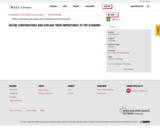
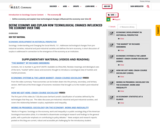
OER Text MaterialEconomic Development in Historical PerspectiveSociology: Understanding and Changing the Social World, 13.1. Addresses technological changes from pre-industrial societies, industrial and post-industrial societies and defines the term economy. A short discussion of surplus is addressed in connection to the emergence of the economy as an institution.
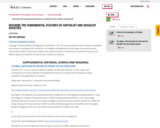
OER Text MaterialTypes of Economic SystemsSociology: Understanding and Changing the Social World, 13.2. This section reviews the basic features of capitalism and socialism, providing a brief comparison of strengths and weaknesses of both types of economic system. Democratic Socialism is discussed in depth, with a special mention to Scandinavian countries to discuss social welfare systems and explore how democratic socialism can operate.
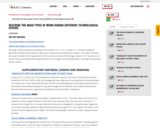
OER Text MaterialThe Development of Modern SocietyWork and Labor in the United StatesSociology: Understanding and Changing the Social World: 5.2.1; 13.4.1. Chapter 5.2.1 reviews hunting-and-gathering, horticultural and pastoral, agricultural, industrial and postindustrial societies. Each type of society is discussed in relation to the organization of their economy and use of technology. Chapter 13.4.1 Focuses on U.S. worker history and relationships between workers and managers after industrialization, including the importance of labor unions.